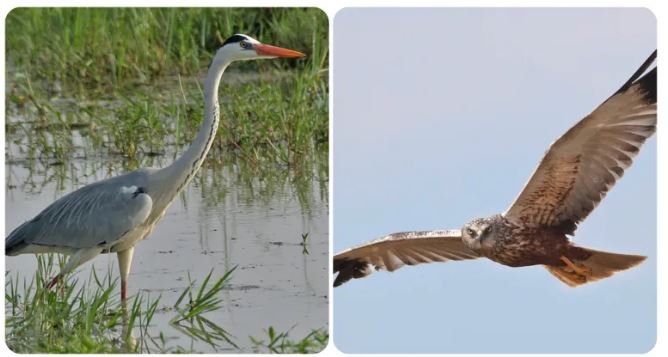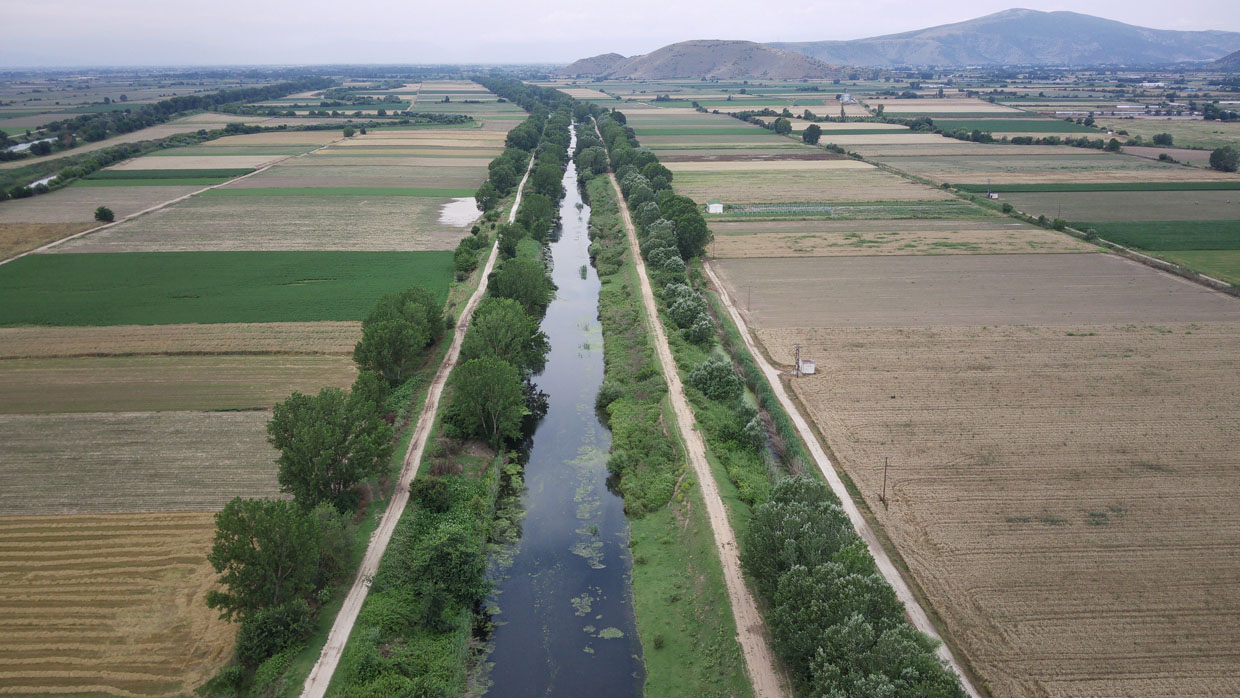The Pineios river is one of the most important wetlands in Greece, as it has riparian forests, rich fauna and extensive sand dunes at its mouth. It belongs to the NATURA network and has been designated as a landscape of special natural beauty.
Name
According to Greek Mythology, Pineios was the son of Oceanus and Tithyos, like all rivers according to the ideo-anthropomorphic perception at the time. It was called Salabrias during the Middle Ages, where Anna Comnini was the first to call it that, in 1150 AD. It is characterized by Homer as an argyrodine.
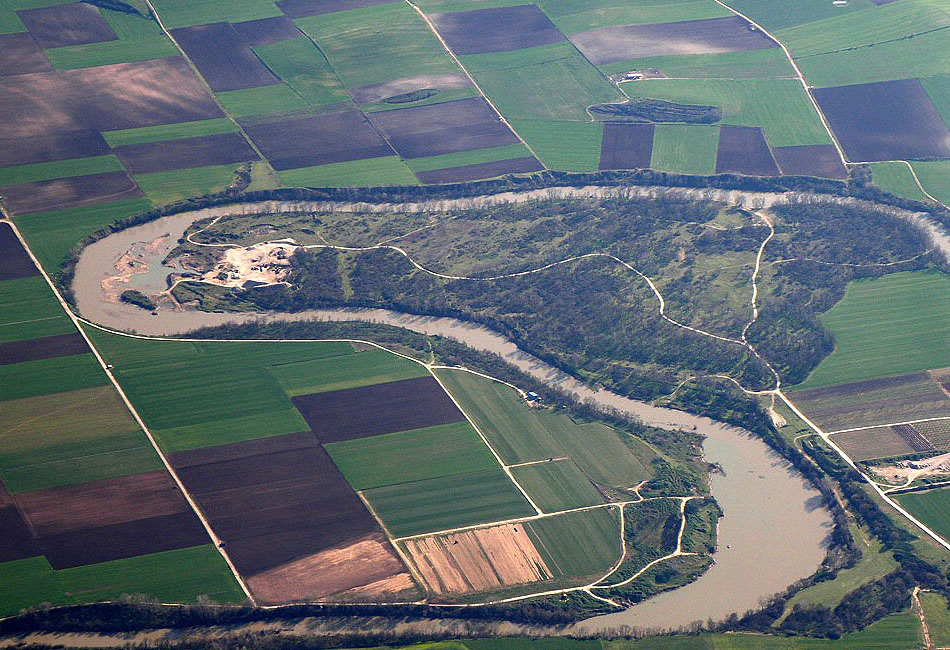
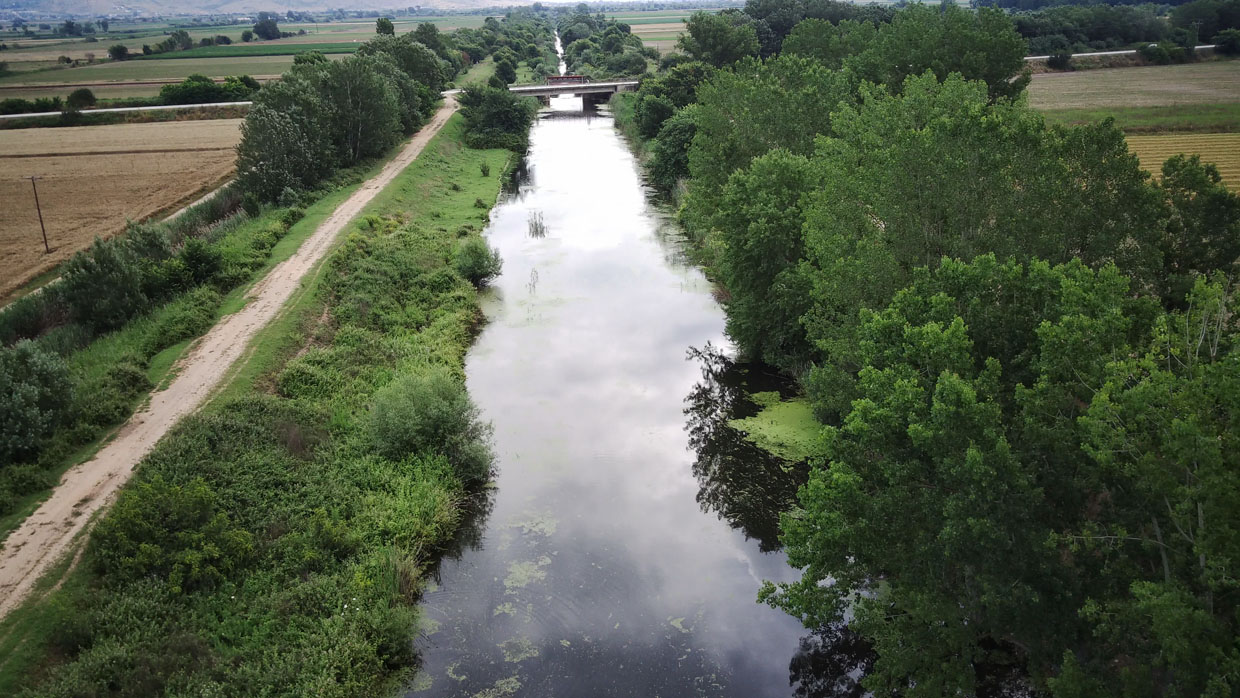
Its sources are in Pindos. Receiving all the waters from the radially converging tributaries of Western Thessaly, i.e. the massif of Pyli, which once formed a lake and flowing from the straits of Kalambaka, which were created by its erosive energy Meteora, it reaches the Thessalian plain, where initially crossing the Municipality of Farkadona and then the passage of the famous Tempe Valley, between Olympus and Ossa, and flows into the Aegean creating its Delta near the Stomio area.
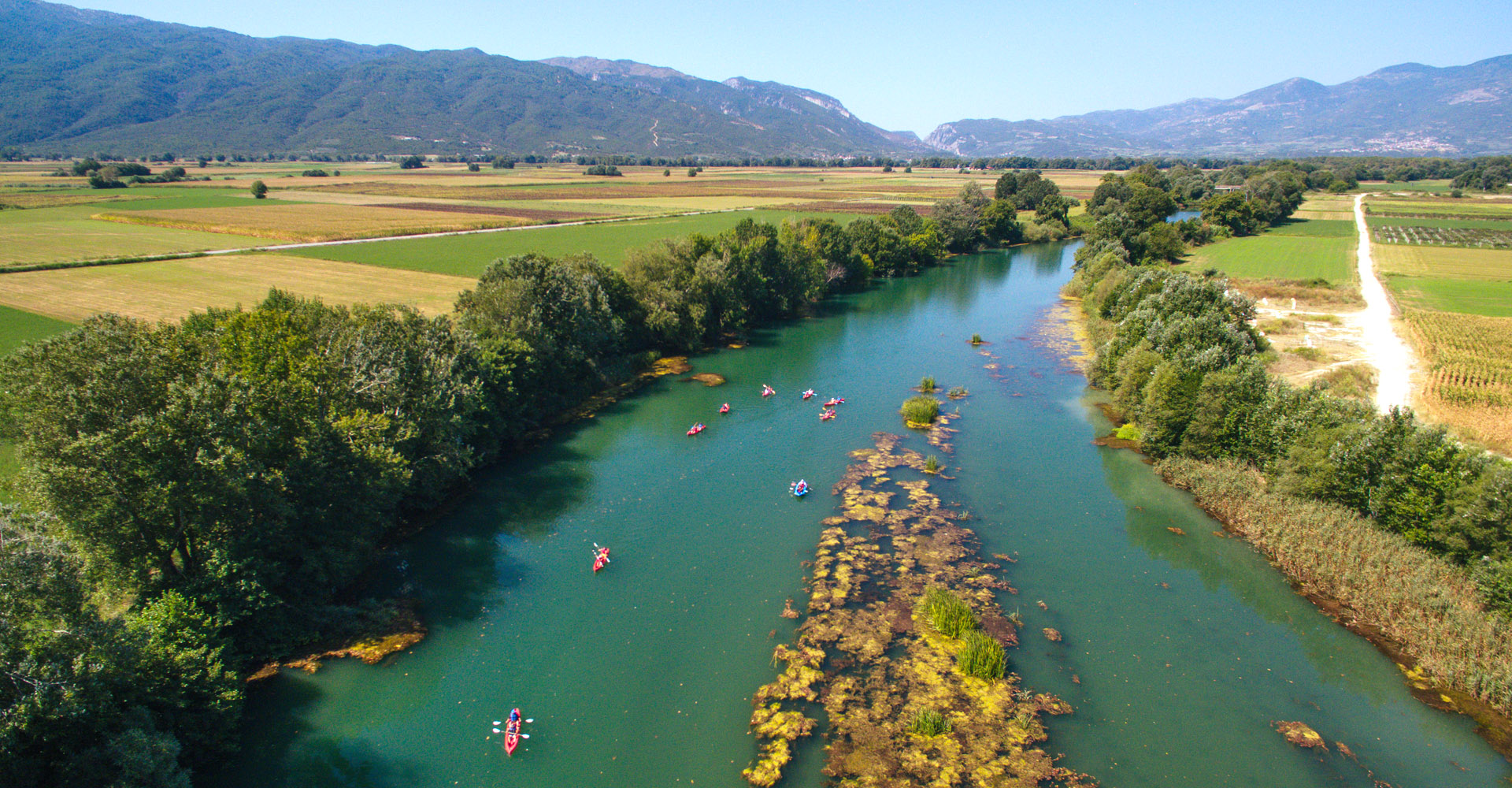

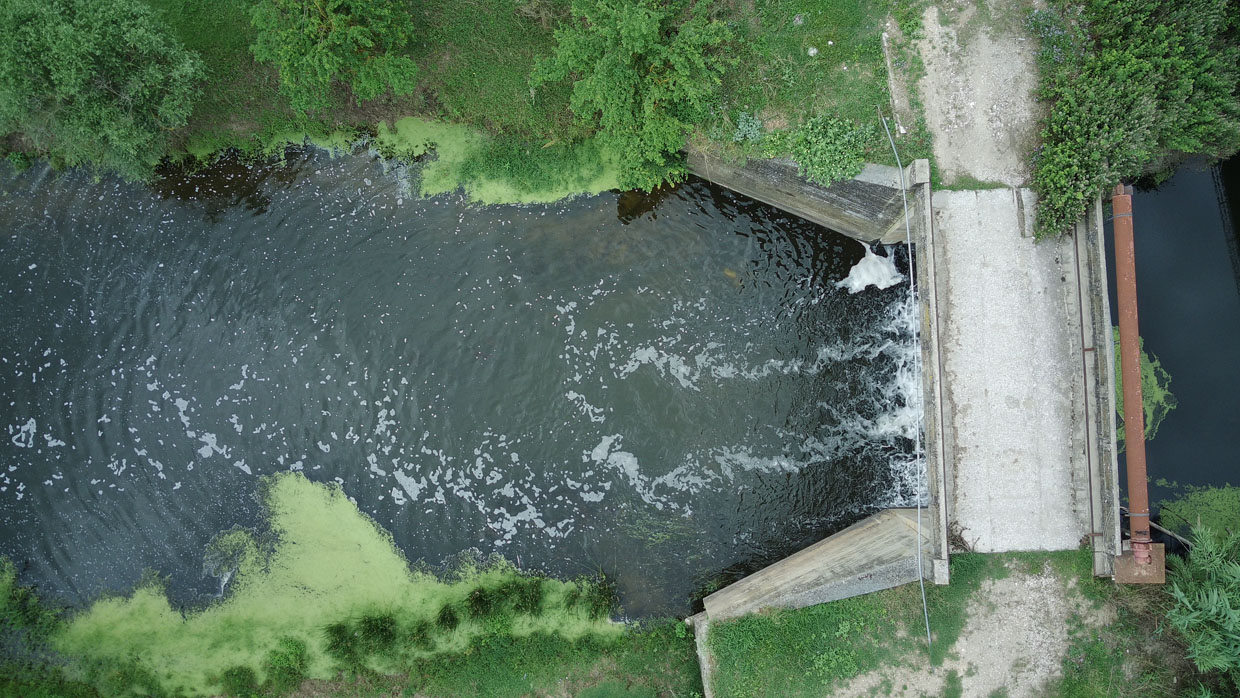

In its largest part, the river is covered by large riparian forests with willows, poplars, sycamores, alders, maples and horse chestnuts, while a little higher there are fir and oak forests. The riverside forests that extend a few kilometers before Tempi to its mouth are considered among the most beautiful in Greece. The most remarkable plants that can be found on the banks and hills around Pinios are Lysimachia atropurpurea, the white lily Lilium candidum, Putoria calabrica, Sedum cepaea, Damasonium alisma, Sedum dasyphyllum, wild garlic Allium heldreichii, bellflower Campanula thessala, the hydrophilic Spirodela polyrhiza, Lactuca saligna, Centaurea graeca ceccariniana, Cyperus michelianus pygmaeus, Silene ungeri, Petasites hybridus, Cionura erecta, Viola odorata, Cyclamen hederifolium, Bassia hirsuta, the Potentilla micrantha and the orchids Himantoglossum caprinum, Dactylorhiza saccifera, Anacamptis pyramidalis, Cephalanthera damasonium, C. longifolia and Ophrys apifera.
The avifauna includes dozens of species that succeed one another depending on the region. Among the predators, eagles, owls, kestrels, rock kestrels, peregrine falcon, peregrine falcons and buzzards live in the high altitudes and in Tempi, near the estuary there are reed kirks, while along its entire length one can find kestrels, harriers, eagle harriers, sleighs, meadow harriers, marsh harriers, tree harriers, etc. .a. The fields near the river are home to white storks, gray egrets, gray egrets, cormorants and grebes. Other important species of Pinios are the terns, woodpeckers, rock plovers, gray wagtails, kingfishers, magpies, kingfishers, red-headed terns, ospreys, cormorants, cuckoos, starlings, nightingales, blue sparrows, egrets , the scrub-beetles, the black flycatchers, the nutcrackers, the skerries, the grebes, the petrels, the goldfinches, the bee-eaters, the vine-growers, the oyster-eaters and the swallows.
Among the amphibians living in the river are common newts, salamanders, green toads, tree frogs, lake frogs, tree frogs and yellow-throated frogs, while the reptile fauna is large and includes loggerhead turtles, river turtles, Mediterranean turtles, loggerhead turtles, loggerhead turtles, terrapins, Roumeli’s lizards, bricklayers, shuttles, coronets, laphiates, sapites, water snakes, lake snakes and vipers. Otters are common almost all along the river, while bears, wolves, roe deer and wild cats live in the high forests before Kalambaka. Other mammals are wild boars, foxes, badgers, ferrets, weasels, squirrels and woodchucks.
Pinios stands out for its extremely rich fish fauna, which includes 29 species. Among them stand out the goulian (Silurus glanis), the Thessalosirko (Alburnus thessalicus), the anchovy (Alosa fallax), the eel (Anguilla anguilla), the Macedonian briana (Barbus macedonicus), the butterfly (Carassius gibelio), the pike (Esox lucius), the goby (Gasterosteus gymnourus), the goblin (Gobio feraeensis), the Thessalogovius (Knipowitschia thessala), the black bream (Pachychilon macedonicum), the perch (Perca fluviatilis), the bream (Rhodeus meridionalis), the miller (Romanogobio elimeius ), the shrike (Rutilus rutilus), the golden needle (Sabanejewia balcanica), the Macedonian needle (Cobitis vardarensis), the salaria (Salaria fluviatilis), the redfin (Scardinius erythrophthalmus), the Macedonian riverhead (Squalius vardarensis), the glen (Tinca tinca) and the malamida (Vimba melanops).
